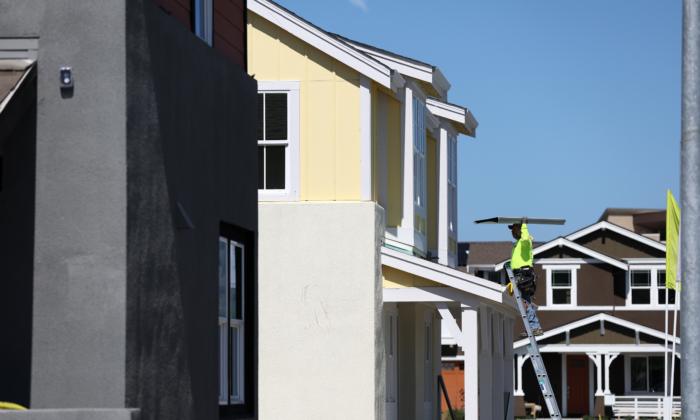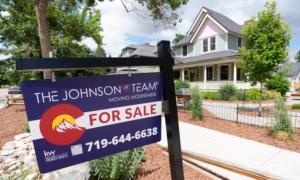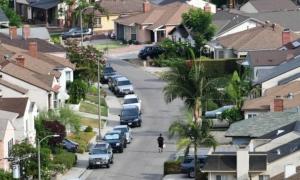The interest rate on an average 30-year fixed-rate mortgage rose closer to 8 percent this week, while existing U.S. home sales plunged, according to recent data.
Millions of potential American homebuyers have been pushed out of the market because of a combination of higher borrowing rates and the costs of housing.
On Aug. 21, the 30-year mortgage rate hit 7.49 percent, barely a week after rates rose to their highest level since 2001, Mortgage News Daily reported.
Rates had declined since rising above 7 percent in October 2022, before soaring again in recent weeks to a 22-year high.
Upward Pressure From the Fed
The upward pressure on mortgages is being accelerated by an overall increase in market rates due to the Federal Reserve’s aggressive policy of interest-rate increase to combat inflation.Mortgage rate levels are downwind of upticks in the Fed policy rate.
Investors are still concerned that Fed policymakers may raise rates again in the near future, after boosting them to a range of 5.25 to 5.5 percent last month, since another increase is likely to exacerbate the housing crisis.
Traders expect that the central bank will hold rates high at least into 2024, before cutting them, assuming that price pressures will continue easing.
Despite a brief pause by the Fed, experts said mortgage rates could surge even further.
“If the 30-year fixed mortgage rate can hold at a high mark of 7.2 percent—and the 10-year yield holds at 4.2 percent—then this would be the high for mortgage rates before retreating,” Lawrence Yun, chief economist at the National Association of Realtors, told MarketWatch.
“If it breaks this line and easily goes above 7.2 percent, then the mortgage rate reaches 8 percent.”
The Federal Reserve Bank of New York, in March, predicted that mortgage rates would rise to 8.4 percent by the following year and 8.8 percent in 2027.
US Housing Inventory at Low Levels
ING’s chief international economist, James Knightley said this month that many households were “trapped right now” in their current homes because of higher costs, despite wanting to buy.Higher mortgage rates are discouraging many current property owners from selling their homes, especially after they bought them at lower interest rates.
The lack of existing stock has led to a dearth of salable homes, causing an inventory crunch and resulting in higher purchase prices nationwide.
This has added pressure on newly constructed housing, which increased to 31.4 percent of single-family homes on the market in the second quarter, according to Redfin.
As of July, there was a little more than three months of housing supply available, despite an uptick in June, which was below the four months of supply available in the same month in 2019, before the COVID-19 pandemic.
The lack of housing has led to less affordability, as the median price for an existing home in July stood at $406,700, nearly 2 percent higher than the same month in 2022.
Home Prices Are Higher From Before the Pandemic
Although home costs are a factor in driving overall inflation, the surge in prices doesn’t seem to have much of an effect on current levels, which were at 3.2 percent as of July.Economists actually expect the cost of housing to ease in the coming months, according to Fed economists.
Although median sales prices have fallen by 13 percent from their 2022 peak, prices are still 26 percent higher than they were in the first quarter of 2020, according to data from the Federal Reserve Bank of St. Louis.
Rising home prices can also be great news for millions of homeowners who saw incredible gains in equity in recent years while holding near-zero mortgage rates, which act as a sturdy buffer against inflation.
Sales of existing homes slipped in July by 2.2 percent from June and 16.6 percent lower compared to the same month in 2022, according to the National Association of Realtors.
“Most homeowners continue to enjoy large wealth gains from recent years with little concern about home price declines,” Mr. Yun said.
“However, many renters are concerned as they’re facing growing affordability challenges because of high interest rates.”
Homebuilders are also reporting a drop in buyer traffic this month, after experiencing strong buyer demand since the pandemic, as many first-time borrowers were increasingly deterred by rising rates.
Still, some investors even view the surge in borrowing rates as a long-term opportunity and are buying up properties in the expectation that rates will go down at some point, which would enable them to sell at higher prices.
“Believe it or not, even with mortgage rates at 22-year highs, we are still seeing bidding wars in some of the hottest neighborhoods in Brooklyn, like Park Slope, Prospect Heights, and Carroll Gardens,” said Colin O'Leary, a real estate salesperson at Berkshire Hathaway HomeServices Fillmore Real Estate in New York. “The reason is because inventory levels are still so low.
“With that said, if you’re in the market to buy in NYC, there are some great buying opportunities right now in the neighborhoods with higher inventory levels.”







